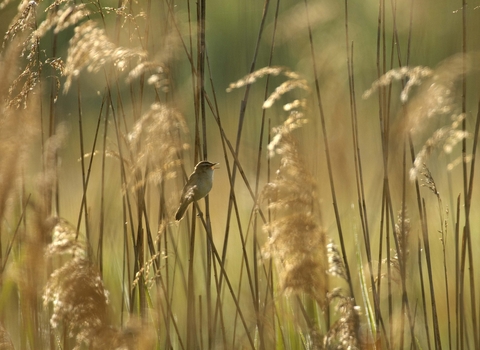
Sedge Warbler in Common Reed ©Chris Gomersall
Common reed
The extensive, golden-brown reedbeds that are formed by stands of Common reed are a familiar sight in our wetlands. They provide an important home for many species, including the rare Bittern.
